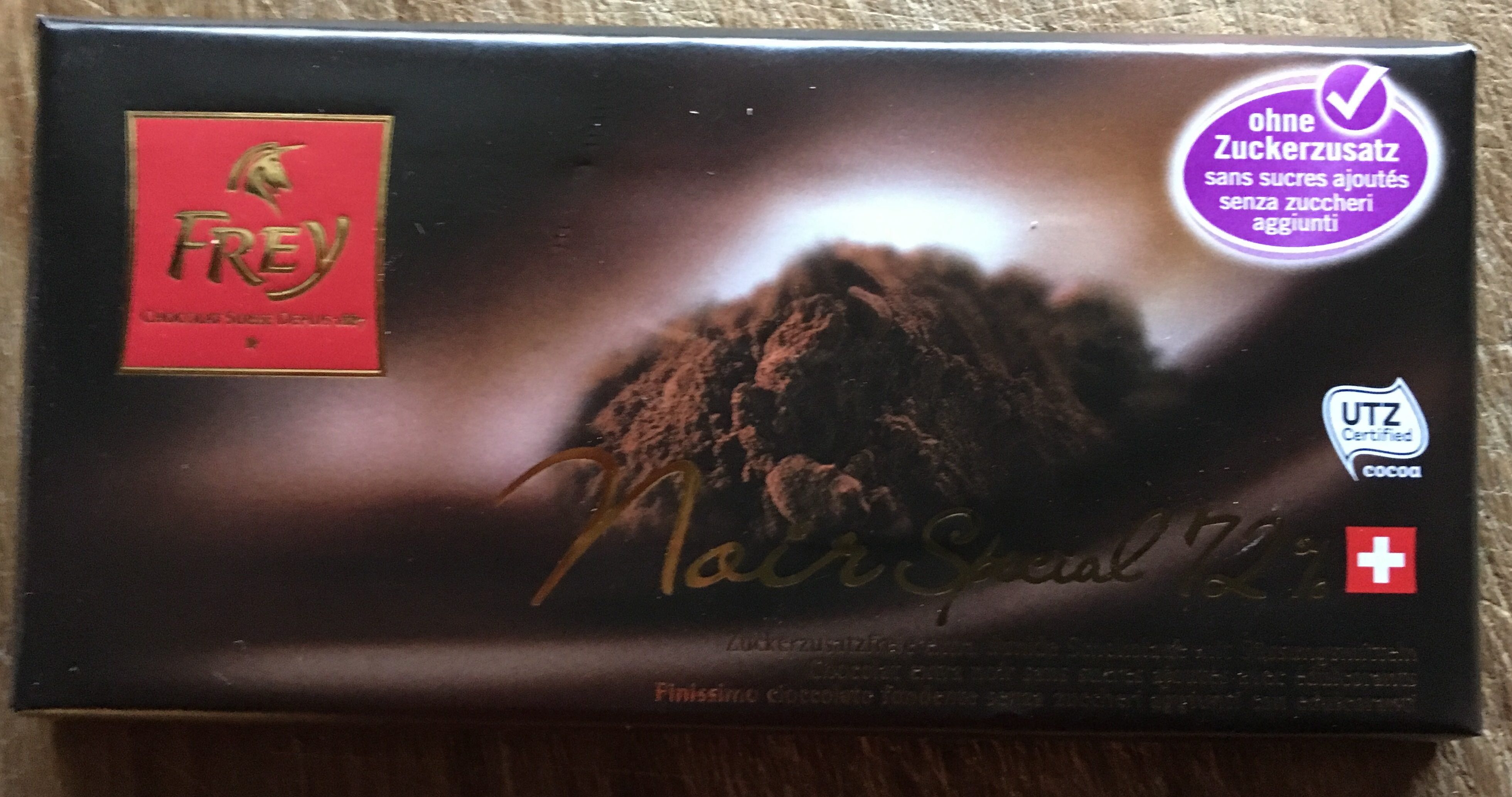Chocolat extra noir spécial - Frey - 100 g
This product page is not complete. You can help to complete it by editing it and adding more data from the photos we have, or by taking more photos using the app for Android or iPhone/iPad. Thank you!
×
Barcode: 7616500919365 (EAN / EAN-13)
Common name: Chocolat Noir 72%
Quantity: 100 g
Categories: Snacks, Sweet snacks, Cocoa and its products, Chocolates, Chocolates with sweeteners, Dark chocolates, Swiss chocolates
Labels, certifications, awards:
Sustainable farming, FSC, FSC Mix, No added sugar, UTZ Certified, UTZ Certified Cocoa, With sweeteners

Manufacturing or processing places: Suisse
Stores: Migros
Countries where sold: France, Switzerland
Matching with your preferences
Environment
Carbon footprint
Packaging
Transportation
Labels
Report a problem
Data sources
Product added on by openfoodfacts-contributors
Last edit of product page on by packbot.
Product page also edited by anticultist, beniben, foodrepo, kiliweb, openfood-ch-import, quechoisir, walterppk, yuka.UesbIeK0Hc8hQ8bLgJgQjACEFL3_GM1BGFEkog, yuka.ZTY4Yk1wb09qT1l3bnNRRzV5dUorZjFMeDRLdFR6dWxEZm9NSWc9PQ.











